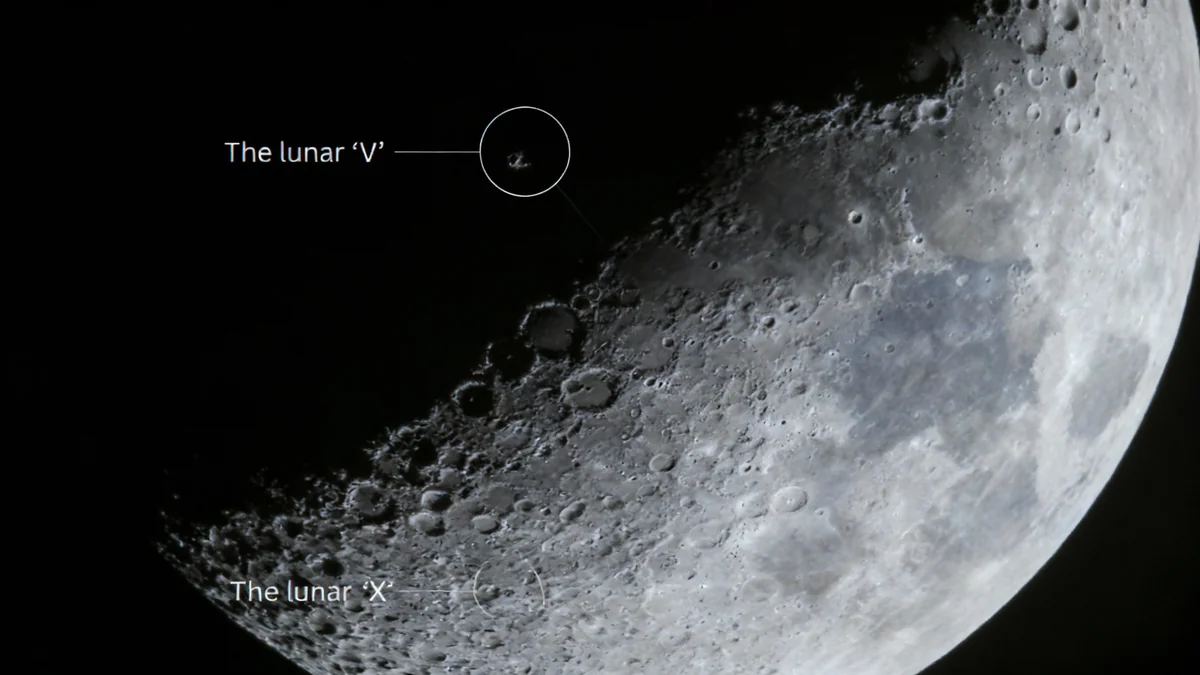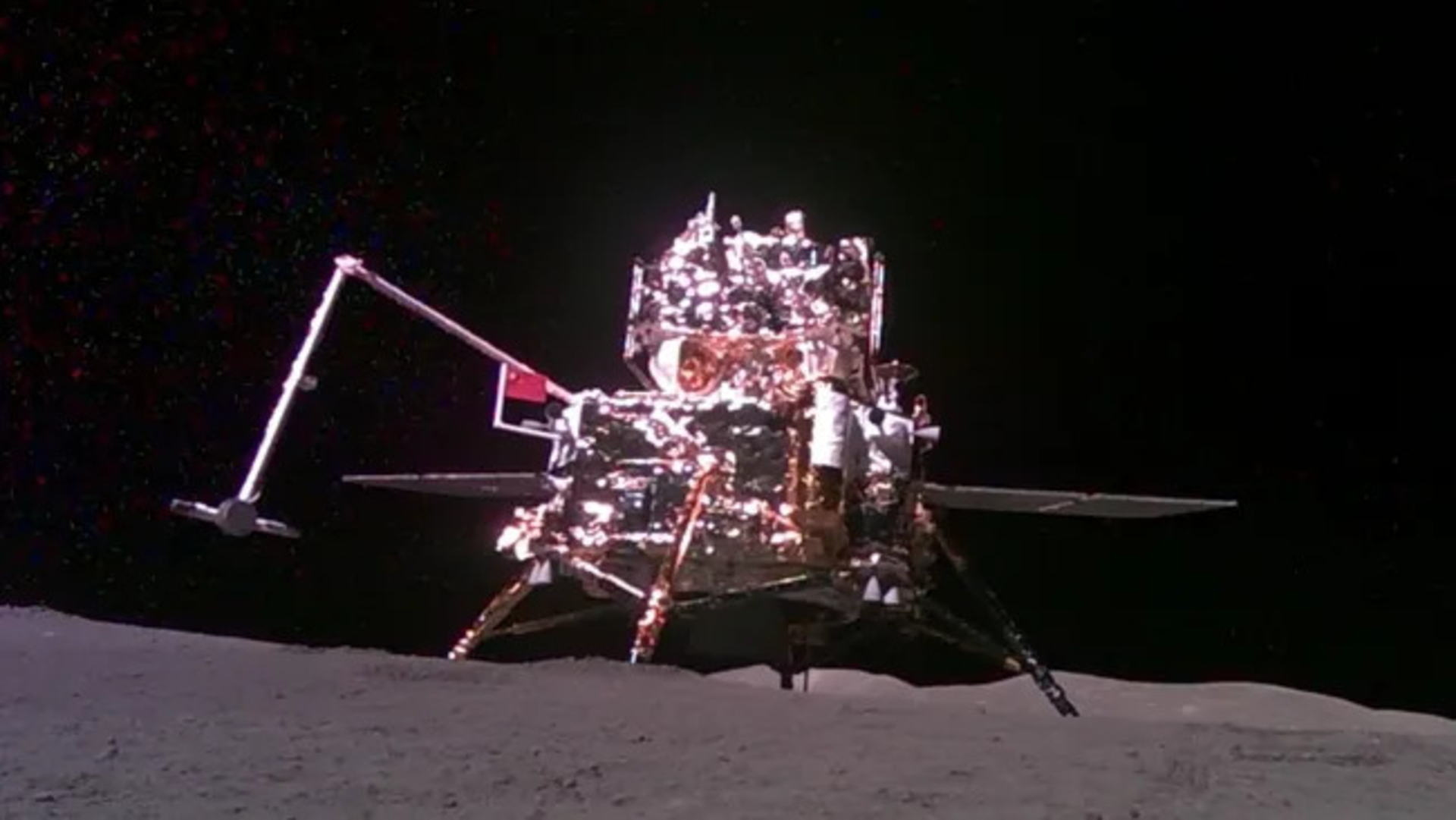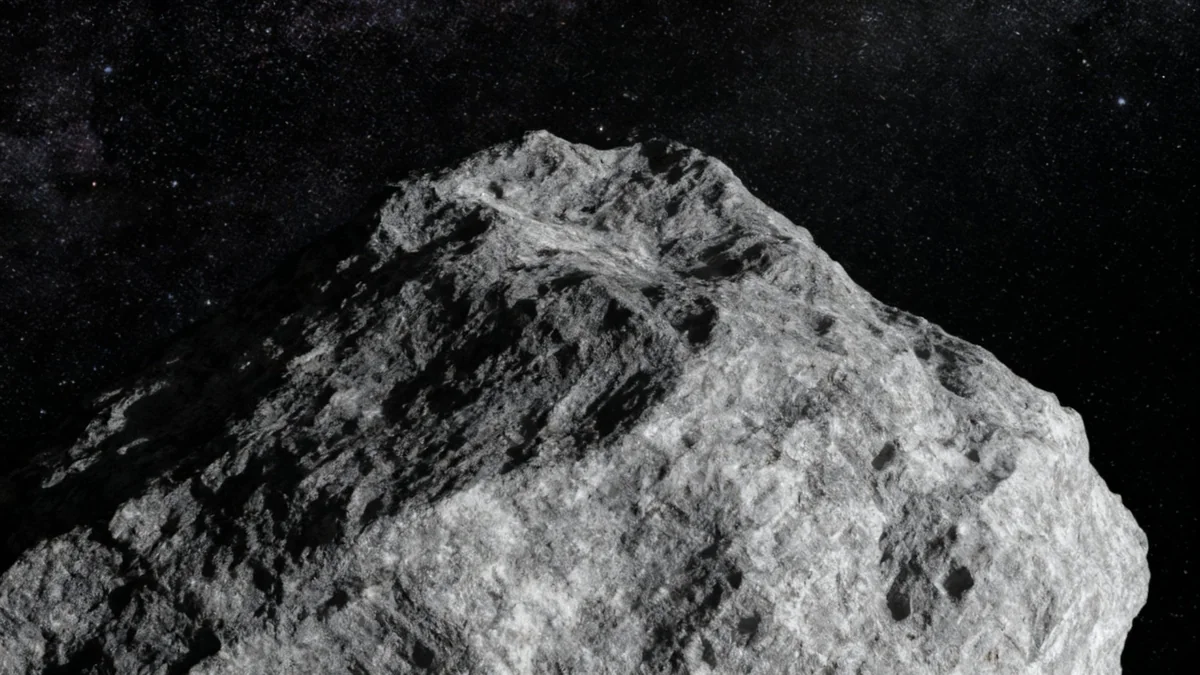Stargazers across the globe have a unique opportunity tonight, October 28, to witness a rare celestial illusion. A trick of sunlight and shadow will create the distinct shapes of a letter 'X' and a letter 'V' on the moon's surface, just hours before it reaches its first quarter phase.
This phenomenon, caused by specific lighting conditions on lunar craters and mountain ranges, offers a brief window for observers to see these striking formations. The best viewing time is expected to be around 7 p.m. EDT (23:00 GMT).
Key Takeaways
- Lunar 'X' and 'V' visible on October 28.
- Best viewing around 7 p.m. EDT (23:00 GMT).
- Caused by sunlight hitting specific crater rims and mountain peaks.
- Occurs just before the moon's first quarter phase.
- Binoculars or a small telescope enhance the view.
Understanding the Lunar Illusion
The appearance of the lunar 'X' and 'V' is not a permanent feature of the moon. Instead, it is a fleeting optical effect. As the moon orbits Earth, the line separating its illuminated and shadowed sides, known as the terminator, constantly shifts. This movement of light and shadow highlights various geographical features in unique ways.
Tonight, the sun's angle will be just right to illuminate the uppermost edges of certain crater walls and mountainous terrain, while leaving the lower areas in darkness. This creates the illusion of the letters etched onto the lunar surface.
"These lunar letters are a beautiful example of how light and shadow play across our natural satellite. It's a reminder of the dynamic nature of celestial mechanics," explained a local amateur astronomer.
The moon will be positioned a little over 20 degrees above the southern horizon during the peak viewing time. For reference, holding your clenched fist at arm's length covers approximately 10 degrees of the night sky.
Where to Spot the 'X' and 'V'
The lunar 'X' is found roughly 25 degrees south of the lunar equator. It forms when sunlight illuminates the broken ramparts of three specific craters: Bianchini, Purbach, and La Caille. These craters, normally less prominent, become clearly defined by the sharp contrast of light and shadow.
Did You Know?
The lunar 'X' is also sometimes called the 'Purbach X' due to its proximity to the Purbach crater.
The lunar 'V' is located about 10 degrees above the equator. It appears to the left of Mare Tranquillitatis, also known as the Sea of Tranquility. This dark, vast plain is famous as the landing site for Apollo 11.
Enhancing Your Viewing Experience
While the lunar 'X' and 'V' can be visible to the unaided eye under very clear conditions, using optical aids will significantly improve the view. Even a good pair of binoculars can reveal the details that form these striking patterns.
For those with access to a telescope, the experience will be even more rewarding. A telescope with an aperture of 6 inches or more will provide crisp, clear views not only of the 'X' and 'V' but also of other prominent impact craters and the sweeping expanses of the dark lunar seas along the terminator.
Lunar Phases Explained
The moon's phases are determined by how much of its sunlit surface is visible from Earth. The first quarter phase occurs when exactly half of the moon appears illuminated, specifically its right half for observers in the Northern Hemisphere.
Amateur astronomers often recommend models like the Celestron NexStar 4SE for beginners. This type of telescope is known for its quick setup and ability to automatically locate celestial targets, making it easier to find specific features on the lunar surface.
Capturing the Moment
For astrophotography enthusiasts, tonight presents an excellent opportunity to capture this unique lunar event. Photographing the moon requires careful technique, including proper exposure settings and stable equipment. Using a camera with a telephoto lens or coupling it with a telescope can yield impressive results.
Many online resources offer guides on how to photograph the moon, covering everything from basic smartphone photography to advanced DSLR setups. Sharing these images helps document and celebrate these transient celestial events.
- Check local weather: Clear skies are essential for viewing.
- Find a dark location: Away from city lights for best contrast.
- Use binoculars or a telescope: Enhances detail and visibility.
- Dress warmly: October evenings can be cool.
- Share your observations: Connect with other stargazers online.
The lunar 'X' and 'V' are a natural reminder of the beauty and wonder of our solar system. These optical illusions, while brief, offer a fascinating glimpse into the moon's complex topography and the ever-changing interplay of light and shadow in space. Do not miss this chance to look up tonight and witness this remarkable display.





